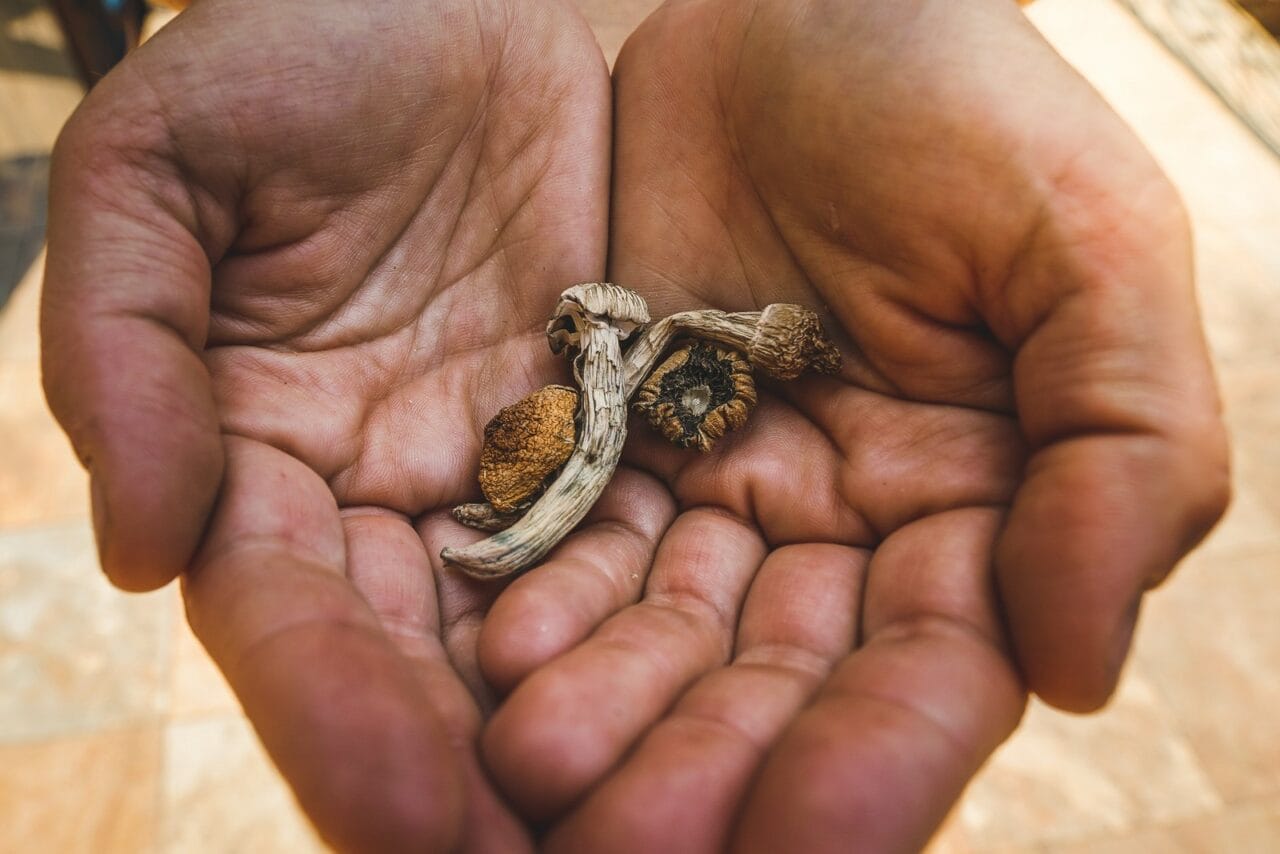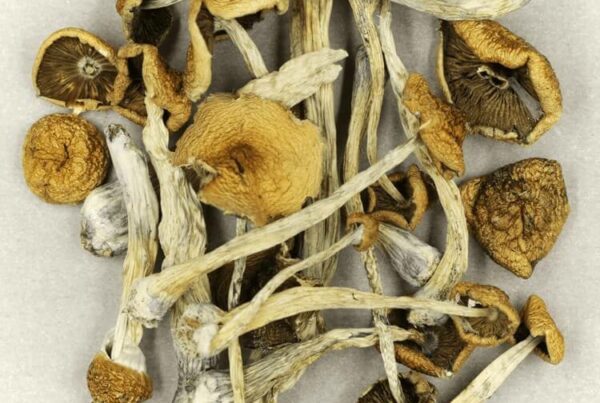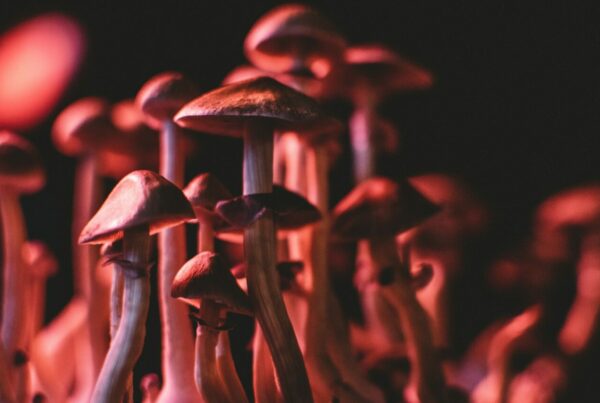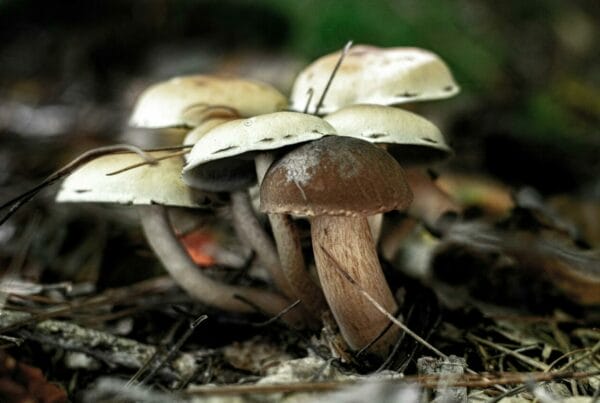Dried mushrooms are among the most sought-after psychedelics available today. If you’ve heard about them and are considering trying them, but unsure if they’re suitable for you, this guide can help.
Novices often find it challenging to decide which psychedelic to start with. We’re here to elucidate how dried mushrooms differ from other substances and why they could be an excellent choice for your initial psychedelic journey.
[toc]Main Points:
- Psilocybe’s active compound is widely studied as a psychedelic for mental health due to its safety, low abuse potential, and short-term effects.
- The most common form is dehydrated Psilocybe, which retains potency and extends shelf life.
- Psilocybin activates the serotonin 5-HT2A receptor, causing enhanced perception, vivid imagery, complex hallucinations, and time distortions.
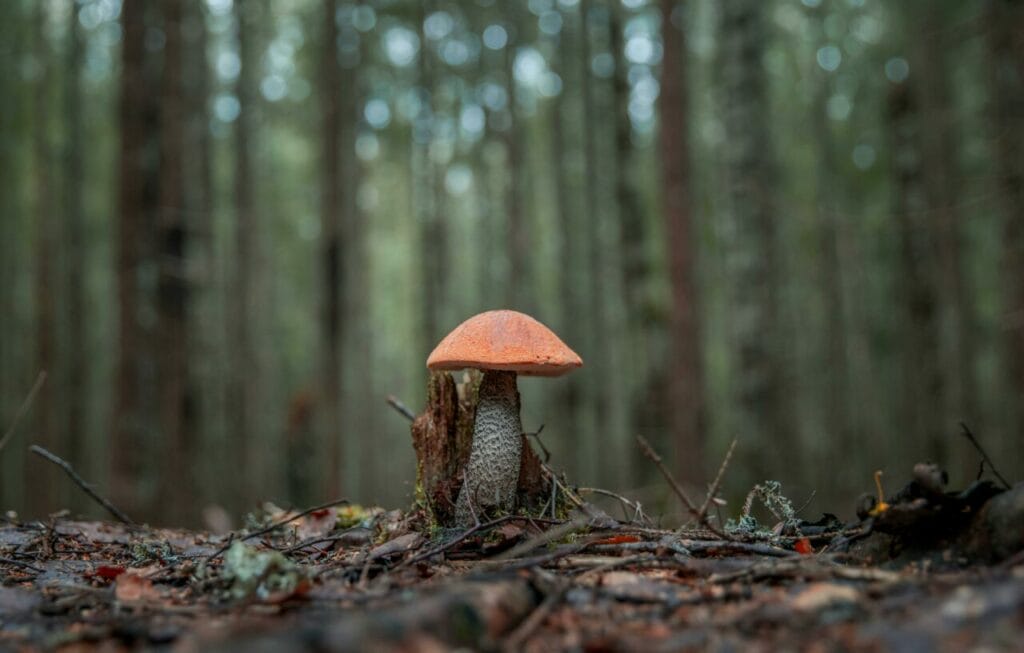
Psilocybin Mushrooms: Exploring the World of Psychedelic Fungi
A psilocybin mushroom contains the psychoactive compounds, psilocybin and psilocin, which induce the hallucinogenic effects experienced by users. The most recognized species—Psilocybe cubensis—features a light brown cap, dark spots, and a distinct shape. A range of other species under the Psilocybe genus also generate these compounds.
Some toxic mushrooms that contain harmful toxins resemble the appearance of Psilocybe, which is why we strongly discourage foraging for mushrooms.
Historically, many mushrooms played a central role in Central American spiritual rituals. Nowadays, their potential benefits in treating mental health disorders, including substance use disorders, are being explored by researchers.
Dehydrating and Storing: The Dried Form
The most common form of Psilocybe available is the dried version. Dehydration is key to preserving potency and extending shelf life. Fresh mushrooms are usually dried using a food dehydrator or placed on a wire rack in a cool, dry area.
This process is crucial for removing excess hours
Magic mushrooms, once dried, can be kept for future use. However, to prevent mould growth and degradation of the active compounds, they must be kept away from moisture.
Follow this step-by-step guide for drying and storing magic mushrooms:
- Use an appropriate food dehydrator or a wire rack to dry the mushrooms properly.
- To maintain potency and protect from excessive moisture, store the mushrooms in airtight containers.
- Store the mushrooms in a cool, dry place to maintain their psychoactive properties.
- Avoid exposing the mushrooms to direct sunlight to prevent degradation.
- Regularly inspect the mushrooms for mould or dark spots, as these are signs of spoilage.
Comparison of Psilocybe Cubensis with Other Psychedelics
In addition to dried mushroom products, there are other psychedelic substances available online. These substances, which can be consumed in various ways, produce different effects on the body. Some of these substances are classified as classic hallucinogens, similar to psilocybin.
| Substance | Origin | Physical Effects | Research Indications | Duration | ||||||||||||||||||||
| Psilocybin | Present naturally in over 200 mushroom species | Altered perception of time, enhanced perception, hallucinations | Depression, Anxiety, PTSD, OCD, Cluster headaches, Alzheimer’s disease | 4-6 hours | ||||||||||||||||||||
| DMT | Present naturally in plants like Psychotria viridis | Auditory hallucinations, profound spiritual experiences, visions | Addiction, Depression | 15-30 minutes | ||||||||||||||||||||
| LSD | Synthetic, first produced by Albert Hofmann in 1938 | Altered perception, amplified emotions, auditory and visual hallucinations | Addiction, Anxiety, Depression, Cluster headaches, Alzheimer’s disease, Tourette’s syndrome, ADHD | 8-12 hours | ||||||||||||||||||||
| MDMA | Synthetic, first synthesized by Anton Köllisch in 1912 | Increased release of serotonin, dopamine, norepinephrine, and possibly oxytocin | ADHD, Autism spectrum disorder, Narcolepsy, Obesity, PTSD | 3-6 hours | ||||||||||||||||||||
| Ketamine | Synthetic, first synthesized by Calvin L. Stevens in 1962 | Anesthetic, produces psychedelic effects at high subanesthetic doses | Addiction, Anxiety, Arthritis, Bipolar disorder, Chronic pain, Depression, Fibromyalgia, Suicidal ideation, Autism spectrum disorder | 1-3 Discomfort: Nausea, chills, and dilated pupils are some of the physical reactions a user may experience. Interpreting Your Body’s ResponseThe functional theories behind these substances are based on observed effects and provide some understanding of how they might work. However, they don’t offer a definitive explanation of the underlying processes.
The Impact of Psychedelic MushroomsThe mental and physical reactions to psychedelic mushrooms can vary greatly based on the dosage, environment, and the user’s psychological state. Common experiences include:
When used responsibly, this substance is considered safe. However, without proper preparation, some users may have unpleasant experiences. Experienced users may find higher doses beneficial, but beginners consuming large quantities may experience a distressing trip. Managing your experience with this substance is straightforward. Choose a calm, quiet environment and have a sober “trip guide” on hand for support. A Preferred Choice Over Other SubstancesDried shrooms are often preferred by medical professionals due to their long shelf life and easy dosage. Their shorter duration and controllable intensity make them a suitable choice for those new to psychedelic therapy. They’re also more natural than other synthetic hallucinogens, except for DMT. It can be challenging to distinguish the benefits of different compounds, as many clinical trials show similar outcomes, particularly between LSD and psilocybin. Psilocybin is the most extensively researched psychedelic for mental health concerns, mainly due to its impressive safety record, low risk of misuse, and short-lived perceptual trips. Health Advantages
Choose Your Favourite Dried Mushrooms and Embark on an Exciting JourneyWith easy-to-use online services at your fingertips, discovering these products is a breeze. Simply place your order and have it delivered right to your doorstep.
Choose Well-Dried Magic Mushrooms for Their Proven Effects and BenefitsDried mushroom products deliver a unique and powerful psychedelic experience, comparable to LSD, MDMA, DMT, and Mescaline. They are appreciated for their introspective effects and potential therapeutic benefits. Being the most researched compound, it’s simpler to understand its advantages and learn how to utilize it efficiently. Fungalfriend Canada offers a variety of these fungi, from highly potent strains to those suitable for beginners. Frequently Asked QuestionsWho should consider (or avoid) psychedelic therapy?If you are grappling with depression, anorexia, alcohol addiction, seeking to stop smoking, or are facing a terminal illness, this therapy could be advantageous. However, if you or your family have a history of schizophrenia, psychosis, bipolar disorder, or borderline personality disorder, it’s imperative to consult your doctor before engaging in this therapy. What should you expect from psilocybin therapy?Although this therapy might be intense, it may also provide long-lasting benefits. The process unfolds in three main stages: {“ordered”:true} –>
Are shroom products more cost-effective than other compounds?When compared to LSD products, dried mushrooms are noticeably cheaper. For instance, you can buy 3.5 grams for about $20. Conversely, the cost of LSD in gel tabs varies depending on the dosage. For instance, six tabs with a strength of 100 micrograms each might cost around $90. |

